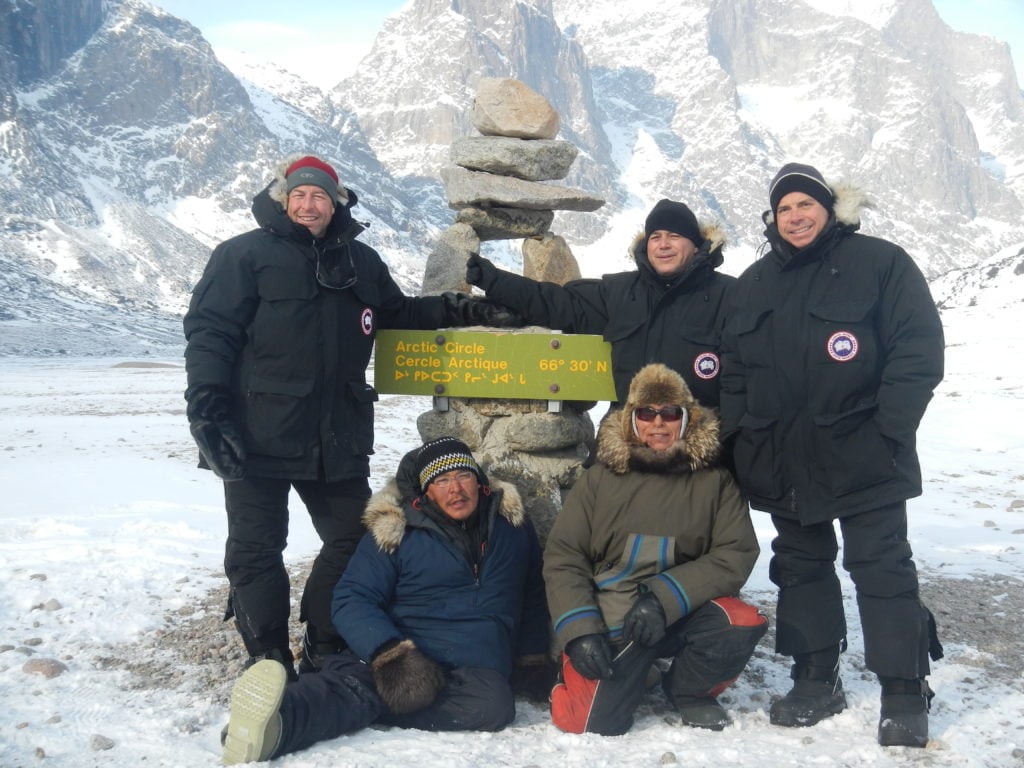The month of May is a very active and exciting time to visit the Arctic! May is the time of year that the mass portion of the Arctic migration is underway. Birds are arriving after their long flights north and Arctic whales are beginning their migrations into the channels long known as they head for the shallower feeding territories for the summer.
With temperatures starting to warm up and with days getting longer, the spring thaw is a very dynamic time. The Arctic begins to move from the frozen sea-ice to the first cracks and open leads that whales will navigate.
Are you curious what visiting the Arctic and Baffin Island are like in the month of May? Let us explain what happens to the area and how wildlife and environment move towards summer at this time of year. And why our Narwhal & Polar Bear Safari is the perfect trip for May.
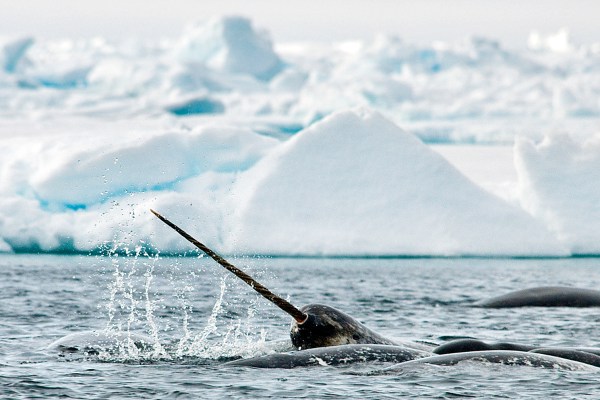
Temperatures and the Environment
This is a period of tremendous change in the Arctic as it begins its shift from spring into summer. May is known to be a particularly dry month for precipitation. So, there’s less concern of being caught in a snowstorm and it’s less likely to get a lot of spring rain.
As the sun re-emerges higher in the sky the days get longer, and the temperature starts to warm up. The sun plays an enormous role in the seasonal shifts. As the Earth’s axis tilts the Canadian Arctic towards the sun again the Midnight Sun reigns over the Arctic. The Midnight Sun refers to the extended sunset that happens late in the evening and as the sun hovers below the horizon before soon emerging again, it leaves a soft hue of beautiful light that illuminates the sky throughout the whole night.
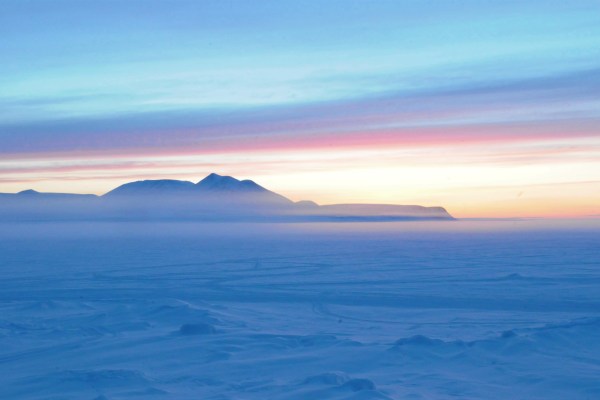
It’s warmer! The extended daylight means the sun is beginning to warm everything up. The average temperature for this area in May is around 0oC (32oF), which is quite mild and enjoyable for guests visiting the Arctic.
This warmer temperatures and sunlight also mean that the snow begins to melt. Not at an accelerated rate like in June, but the snow starts to recede and even packs the ice making it quite effective for snowmobiles to travel to view wildlife at various locations. There aren’t big puddles and wide cracks in the ice so it’s easier to get you exactly where you want to go to optimize sightseeing opportunities.
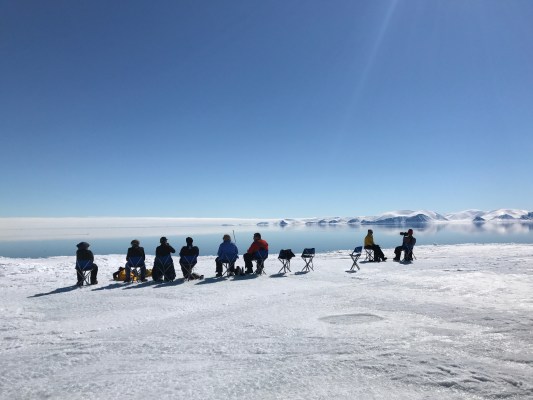
Bird Migration into the Arctic
May marks a particularly exciting time for people interested in the annual migration of birds returning to the Arctic. This is the time when birds begin arriving in larger numbers. Imagine seeing hundreds or even thousands of birds, some from tens of thousands of miles away, fluttering above you, diving or bobbing in the water or beginning nesting or mating behaviour.
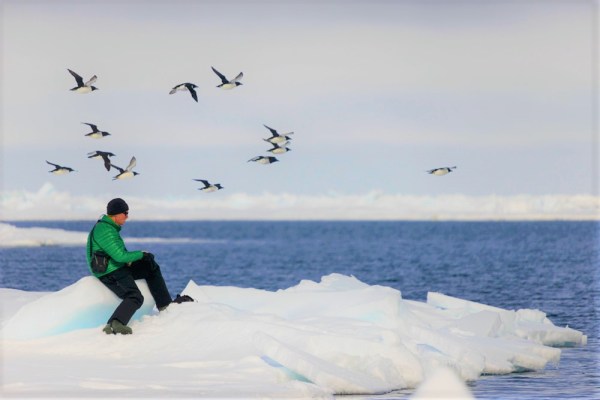
Key species are Thick-billed Murres, Black-legged Kittiwakes and Greater Snow Geese. But you may also see the King Elders, with their impressive colours or see the Arctic Tern which flies all the way from Antarctica. The Red Knot, known to migrate 15,000 km (9,300 mi) from South America, and Snow Geese become iconic staples of the avian landscape in the Arctic.
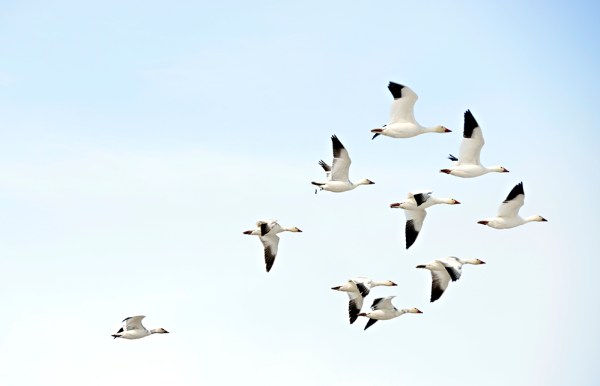
What’s so exciting about May is that the birds are still very active. Later in June the birds have begun nesting and are occupied protecting and incubating their eggs. But in May they are still arriving, socializing and feeding in an exciting fervor.
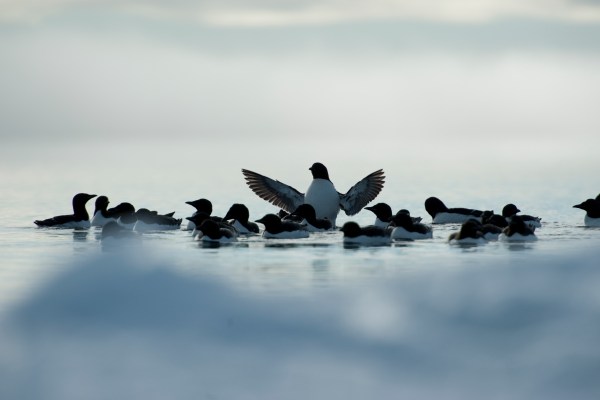
There’s something incredible about this migration. With some birds flying phenomenal distances to lay their eggs in the same region that they hatched from. There are few behaviours in nature that match this dedication.
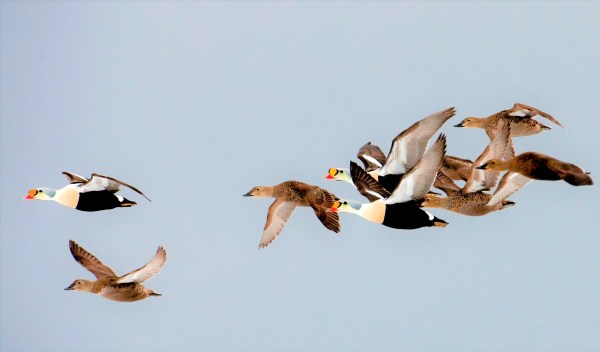
Polar Bears and Cubs
To polar bears, the month of May represents the end of their on-ice hunting season. Polar bears do their main hunting on frozen sea-ice from winter to spring. It helps them because seals are restricted to fewer breathing holes that they rotate through. That means if a polar bear finds one of these small holes the bear can often stand above it and wait for the seal to come to the bear. However, when the ice melts and seals can surface further out at sea it drastically drops the odds of a bear catching a seal.
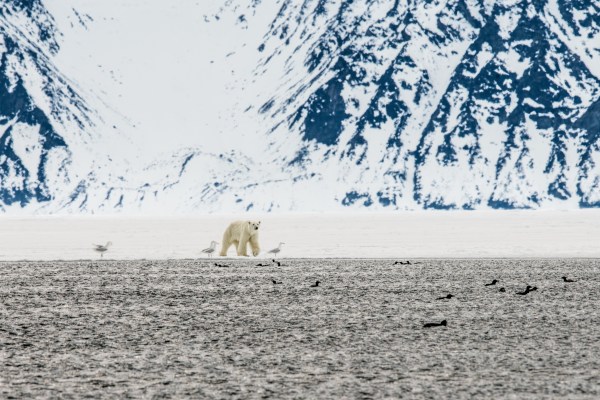
So, what you’ll find in May are polar bears relying on the last of the frozen sea-ice to pack on weight before summer comes. That means that visitors can still find polar bear roaming the floe edge, which is where land-anchored ice meets the open water.
Wondering what polar bear families are doing in May? Polar bear mothers and their cubs emerge from their dens from March to May. That means these adorable cubs are seeing their new habitat for the first time as they play together or slide down mounds of snow.
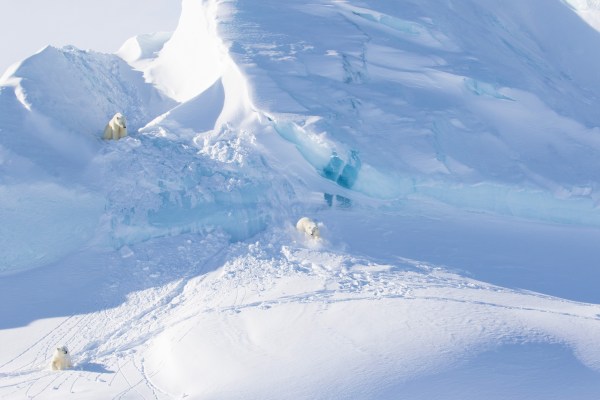
Since polar bear cubs nurse from their mothers for 18 months and sometimes longer, this is the time of year you might find year old cubs beginning to hunt and eat seals that their mother caught. This can make them devilishly cute if you catch cubs after a meal on one of our polar bear photography tours.
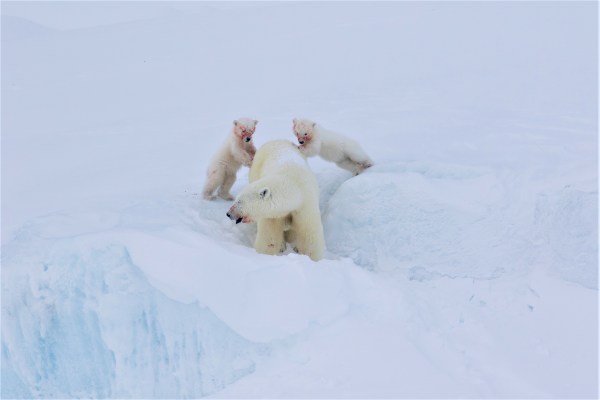
Whale Migrations Across the Arctic
If you’re interested in seeing and photographing the remarkable annual Arctic whale migration, then May is an exciting time to visit. Whales wait for the sea-ice to start breaking up and disappearing so that they can reach the estuaries and shallow bays that make up their summer feeding and breeding territories.
Narwhal spend their winter in deep waters that are almost entirely frozen, like Davis Strait between Baffin Island and Greenland, until cracks in the ice mark the beginning of their migration. These openings allow pods of narwhal to move into their summer feeding grounds full of their favourite food, Arctic cod.
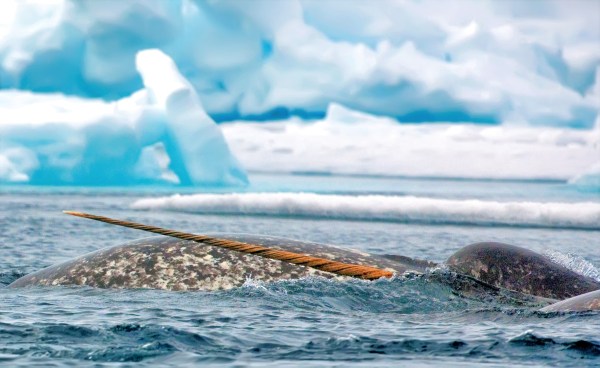
May is also an important month for the mating and nursing of narwhal. In April and May narwhals will mate out in the deep water before their migration. Then through May and June narwhal migrate to shallower water to give birth. That means generally mothers migrate earlier in the season.
Considering that May coincides with the early ice break-up of the frozen sea-ice, these cracks and leads that narwhal navigate are still narrow and offer the most spectacular photography opportunities. Imagine seeing a pod of narwhal bobbing and diving merely feet in front of you.
The start of the beluga whale migration is actually more predictable than other whales because it is based on the duration of sunlight. There are no physical or biological triggers that stimulate this movement, so you can relatively accurately assume that May will mark the beginning of their migration, due to the return of the Midnight Sun.
Belugas, like narwhal, will generally mate between February and May, however, they have an extended gestation period and it can be as long as 13 months before the female begins calving. And belugas in the Canadian Arctic also have a long calving period lasting from March to September.
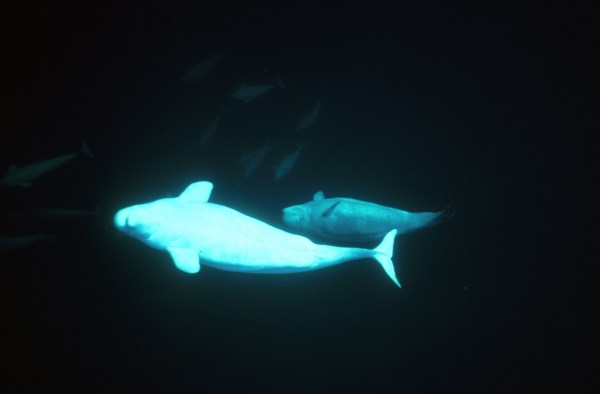
That makes May an incredible time to find belugas because they are beginning to make their way to the safety of warmer estuaries and shallow bays to give birth to their calf. This also means that they will appear in these narrow cracks throughout May providing breathtaking photography and viewing opportunities.
Interested in Traveling to the Arctic in May?
One of our most exciting safaris is our Narwhal & Polar Bear Safari. This trip has dates starting in May and brings you to the northern edge of Baffin Island. Enjoy unparalleled wildlife opportunities with day trips at the floe edge to experience the whale migration or take a trip out on the land looking for polar bear, all while the days are getting warmer and longer.
Learn more about our Narwhal & Polar Bear Safari here!
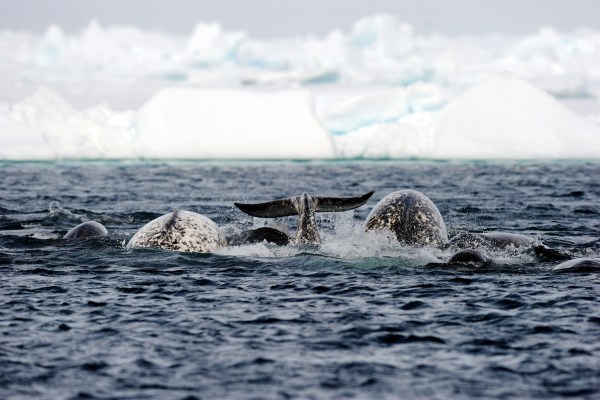
Experience The Arctic On A Safari
Get chances to view elusive Arctic wildlife and experience the majesty of the Arctic on safaris year around. View all Arctic Safaris here.
Ready for adventure? Contact our Arctic Travel Advisors to book.
Are you still curious about the many wonders of the Arctic or looking for more interesting content then explore more blogs here!
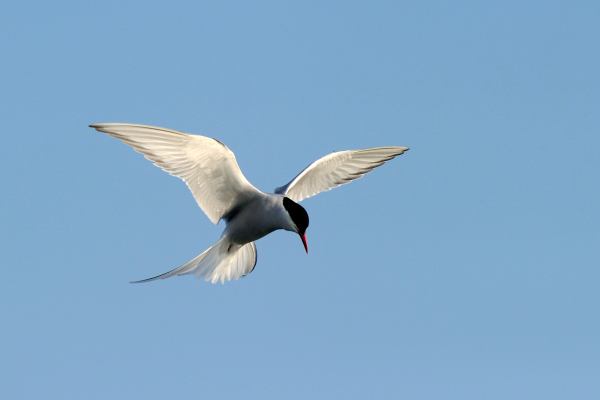
By: Mat Whitelaw




